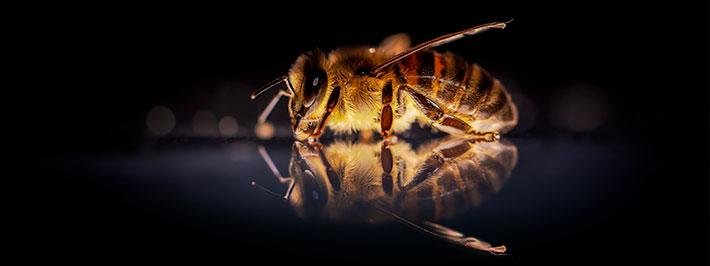
Robot bees can pollinate in case of their apocalypse
Intensive farming methods and the consequences of climate change have placed bees with a never-before-seen threat. Until now, a group of scientists from the Netherlands have worked on an alternative solution and have developed something out of a movie: Robot Bees.
A group of scientists from Delft University of Technology has generated some of the complex wing movement patterns and aerodynamics of fruit flies. The researchers believe they will be able to create swarms of bee-shaped drones to pollinate plants if real-life insects disappear.
The wings of the DelFly robot flutter 17 times per second, to be able to fly and stay in the air, controlling through small adjustments the movement of its wings. The robotic bee can hover at one point, fly in any direction, and even rotate 360 degrees on its own axis. Because the wings of robots are made of a lightweight film made of mylar, the material used in space blankets, it is safe for people to work around them.
They can travel up to 24km / h or 15mp / h, they are efficient in their flight so their batteries last long. They can be equipped with spatial sensors so they can autonomously fly from one floor to another, avoiding each other and other obstacles as they go.
Mat?j Karásek, a researcher working on the project, said: "The use we see for this is greenhouse pollination. The bee is threatened due to our cultivation methods and we do not know what its future will be. This is a solution."
"We are not trying to copy flies and bees, but we are trying to learn from them," he said. "Physics limits how small normal drones can be."
The robotic insect is 33 cm long and weighs 29 g, making it 55 times larger than a fruit fly. You can also fly for only six minutes, or 0.6 miles (1 km) on your current battery. But the plan, says the university, is to reduce the size of the insects they try to emulate as they develop the robot.
The Netherlands is one of the world's largest exporters of agricultural and food products in the world. Bees are responsible for pollinating 80% of the edible crops grown in the country.
However, of the 360 different species of bees in the Netherlands, about half of them are threatened. Globally, it has been attributed, in part, to the dramatic decline in the number of pollinators in recent years to the widespread use of pesticides. It has recently been claimed that a popular pesticide could wipe out common bumblebee populations by preventing the formation of new colonies.
The Standing Committee on Plants, Animal Feed and Food, which includes representatives from the 28 Member States and the European Commission, has endorsed the ban on the outdoor use of three pesticides considered dangerous to bees. These are three neurotoxic substances, produced by the German manufacturer Bayer and the Swiss Syngenta, that attack the nervous system of insects and whose use has already been restricted since 2013, following a first negative evaluation by the European Security Agency Food (EFSA).
Karásek told The Guardian: "I think in five to 10 years we will have the technology to make drones much smaller and we could see them put into use in greenhouses." Which is where the bees are most affected.